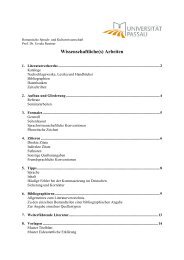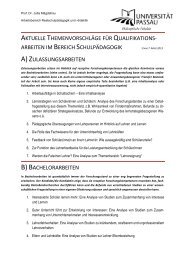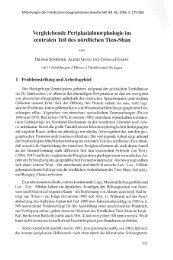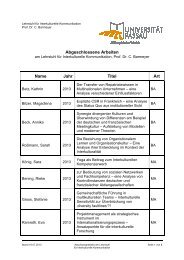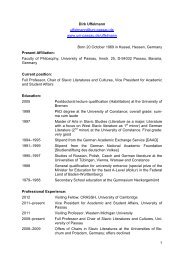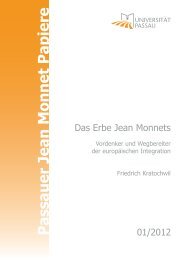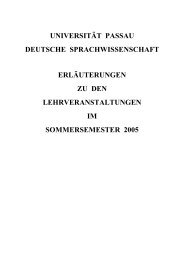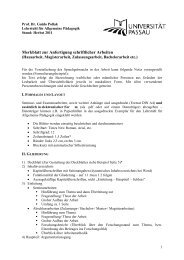The attempt to adopt a mixed-member proportional election system ...
The attempt to adopt a mixed-member proportional election system ...
The attempt to adopt a mixed-member proportional election system ...
You also want an ePaper? Increase the reach of your titles
YUMPU automatically turns print PDFs into web optimized ePapers that Google loves.
39<br />
1. 1997, adjusted <strong>to</strong> have four or more regions, and using a lower threshold than<br />
the previous 5%. This model had been proposed by Phairote, Pisit, Nakharin,<br />
Woothisarn, “arai phuak ni.”<br />
2. A new <strong>proportional</strong> <strong>system</strong>. This was supported by Jaran, Chuchai, Wicha,<br />
Khomsan, Krirkkiat, and many others.<br />
“Those who agree with Khun Nakharin, please raise your hands.”<br />
• 15 votes<br />
“Those who agree with Jaran, please raise your hands.”<br />
• 12 votes.<br />
Somkhit: “15 <strong>to</strong> 12 na khrap” (ibid.:110f., result on p. 111).<br />
<strong>The</strong>refore, the proposal <strong>to</strong> introduce a <strong>mixed</strong>-<strong>member</strong> <strong>proportional</strong> <strong>election</strong> <strong>system</strong><br />
was defeated, at this CDC level, by the proposal for a <strong>mixed</strong>-<strong>member</strong> majoritarian<br />
<strong>system</strong> by only three votes. Thus, the proponents of the MMP had made considerable<br />
progress since the CDC’s retreat in Bang Saen two month earlier, where their proposal<br />
had been more clearly defeated when they lost by 21 <strong>to</strong> 9 votes. After this vote had<br />
been lost, they had two weeks time for lobbying CDC and, especially, CDA <strong>member</strong>s<br />
until the final and decisive vote would take place in the CDA, <strong>to</strong> which the CDC had<br />
<strong>to</strong> submit its completed constitution draft.<br />
<strong>The</strong> CDA’s final decision for a <strong>mixed</strong>-<strong>member</strong> majoritarian <strong>system</strong><br />
<strong>The</strong> final step in deciding about the country’s <strong>election</strong> <strong>system</strong> arrived on June 21,<br />
2007 with the “special” (phiset) 29th meeting of the CDA, in which the assembly deliberated<br />
the remaining contentious issues jointly with the CDC. If differences could<br />
not be solved amicably, votes had <strong>to</strong> be taken. In the minutes of this meeting (CDA<br />
29), the discussions on the <strong>election</strong> <strong>system</strong> start on page 58, while the final vote on the<br />
MMM/MMP issue is recorded on page 249. <strong>The</strong> pages in between are filled with serious<br />
deliberations, misunderstandings, quarrels, struggles amongst the contending<br />
groups and individuals, and votes. <strong>The</strong> procedure started with Pakorn Priyakorn outlining<br />
the CDC’s <strong>election</strong> <strong>system</strong> proposal. It included a reduction of the number of<br />
MPs from 500 (as in the 1997 constitution) <strong>to</strong> 400. <strong>The</strong>y should comprise 320 MPs




